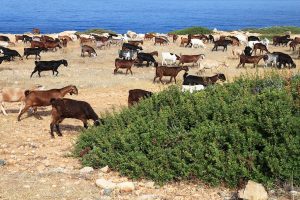Increasing Fruit Production

There are many countries where following a fruit based diet is very affordable. Thailand is the perfect example. In Thailand we can buy lots of fresh, raw, local fruit, for much less than in the United States. Ecuador is another example where we can get a great deal of fruit for a few dollars a day. This depends greatly on which part of these countries we visit.
Tropical destinations are preferred by those interested in raw vegan and fruit based diets, because fruits grow more abundantly in tropical and sub-tropical regions. This is fascinating when we consider that at least 30% of the U.S. territory is located in sub-tropical regions.
These areas include the East Coast, from South Virginia to Florida, the Gulf Coast, parts of the inland South and Southwest as well as the West Coast from San Diego to Northern California. In these zones we find major cities such as Atlanta, Austin, Charlotte, Dallas, Houston, Las Vegas, Los Angeles, Memphis, New Orleans, Orlando, Phoenix, San Antonio, San Diego, San Francisco, Tampa, Charleston, Columbia, Daytona Beach, El Paso, Oklahoma City, Richmond, Sacramento, Sedona and Tucson. Some of these areas are excellent for fruit production, and they give us an idea of the vast amount of space and resources available in the United States to grow fruit.
On top of that, there are many cities in the United States that already produce tons of fruit without being in sub-tropical regions. For example, 58% of the apples grown in the U.S. come from Washington State, 11% come from New York, and 8% from Michigan.
We know that the United States has enough land, technology, labor, and resources, to provide affordable fruit to every single citizen, regardless of where they live. In fact, it is likely that the United States alone has enough resources to feed the entire world on fruit based diets.
The problem isn’t that fruit is expensive; the problem is that the government, companies, and individuals in this country, are mishandling our natural resources and human potential.
Previous Section:
Next Section:
Acknowledgments



